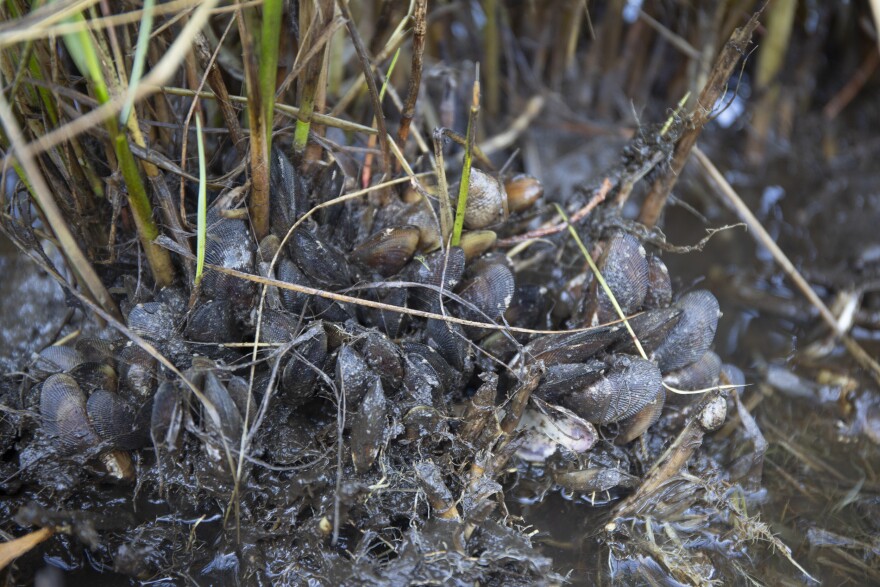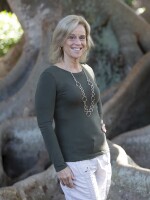About a dozen volunteers wearing rubber boots and slathered in sunscreen have come to Robinson Preserve along the south shore of the Manatee River in Northwest Bradenton to plant saltmarsh grass along new areas of tidal basin.
Damon Moore, a Division Manager with Manatee County's Parks & Natural Resources, gathered this crew at a marsh grass nursery created a decade ago at this 600-plus acre park.
The first part of bolstering this important coastal habitat is digging up the cordgrass before transplanting it to bare shoreline elsewhere in the preserve.
Armed with shovels and large buckets, the volunteers march ankle-deep into a mudflat thick with spongy muck. The crew — nicknamed the RIP Squad — are starting what could be a seven-year long process of creating a mangrove forest designed to protect the area from the impacts of climate change.
It will take about a year for these plantings to fully coalesce, then, through natural succession, the marsh grasses will capture mangrove seeds on the tides.
Volunteer Brenda Nusbaum is originally from Ohio, and now lives in Lakewood Ranch.
"Since I've been in Florida, I've learned about the importance of the mangroves as far as filtration, and protecting our water and carbon dioxide," she said. "And the salt marshes are so critical because of the things that are released in the bay. They have to be filtered out or there won't be anything left."
Similar saltmarsh restoration projects in Manatee County at Emerson Point Preserve and Perico Bayou show how these habitats are the foundation of the coastal food chain. The plants feed small animals which, in turn, feed larger animals such as birds, crabs, and fish.
Restoration efforts improved water quality in the surrounding areas, and the native habitats supported nesting for multiple protected bird species as well as spawning waters for snook and tarpon.
Saltmarsh cordgrasses are extremely hardy, grow in salt-tolerant conditions, and are easy to pull in transport. They also greatly reduce pollutants in the water by filtering out excess nutrients and chemicals.
Damon Moore manages ecological restoration in Manatee County. He says it may take seven years to establish a mangrove forest — but when that happens, there’s an even bigger impact on the environment.

Mangroves can mitigate the impacts of climate change by offering flood protection and buffering coastal communities from the full impact of storms that have become more frequent and intense.
"You can just look at the physical aspect of a mangrove swamp, there's so many roots going down into the ground to hold things in place,” said Moore “That's really important in storm surge situations, where we have tidal flows where there aren't usually tidal flows, so this is a great opportunity to get more in here and bolster what we already have.
"I think the most important thing to recognize is that natural shorelines and natural lands in general, provide numerous benefits. The more natural area between open water and the built environment the better.”
According a report by the Nature Conservancy of Florida and the University of California, mangroves prevented an additional $1.5 billion in direct damages to Florida from Hurricane Irma in 2017. Their analysis also found that just 100 yards of mangrove trees can reduce wave height by 66%.
Moore says salt marshes, seagrass, and mangroves also capture massive amounts of carbon dioxide emissions and other greenhouse gases.

"The biomass within these things, they're pulling that carbon out of the atmosphere,” he said. “It’s stored in their root materials so it’s out of the atmosphere and it's sequestered.”
The saturated soil found in marsh ecosystems can retain more carbon per acre than some terrestrial forests and is often referred to as blue carbon — that is, carbon captured and retained by coastal ecosystems.
The volunteers mucking it up at Robinson Preserve say that’s what makes this sea grass planting so important — the long game.
And as a small fiddler crab scampers by them, it’s a reminder that the habitat created here will have a big impact on future generations of creatures and humans.











